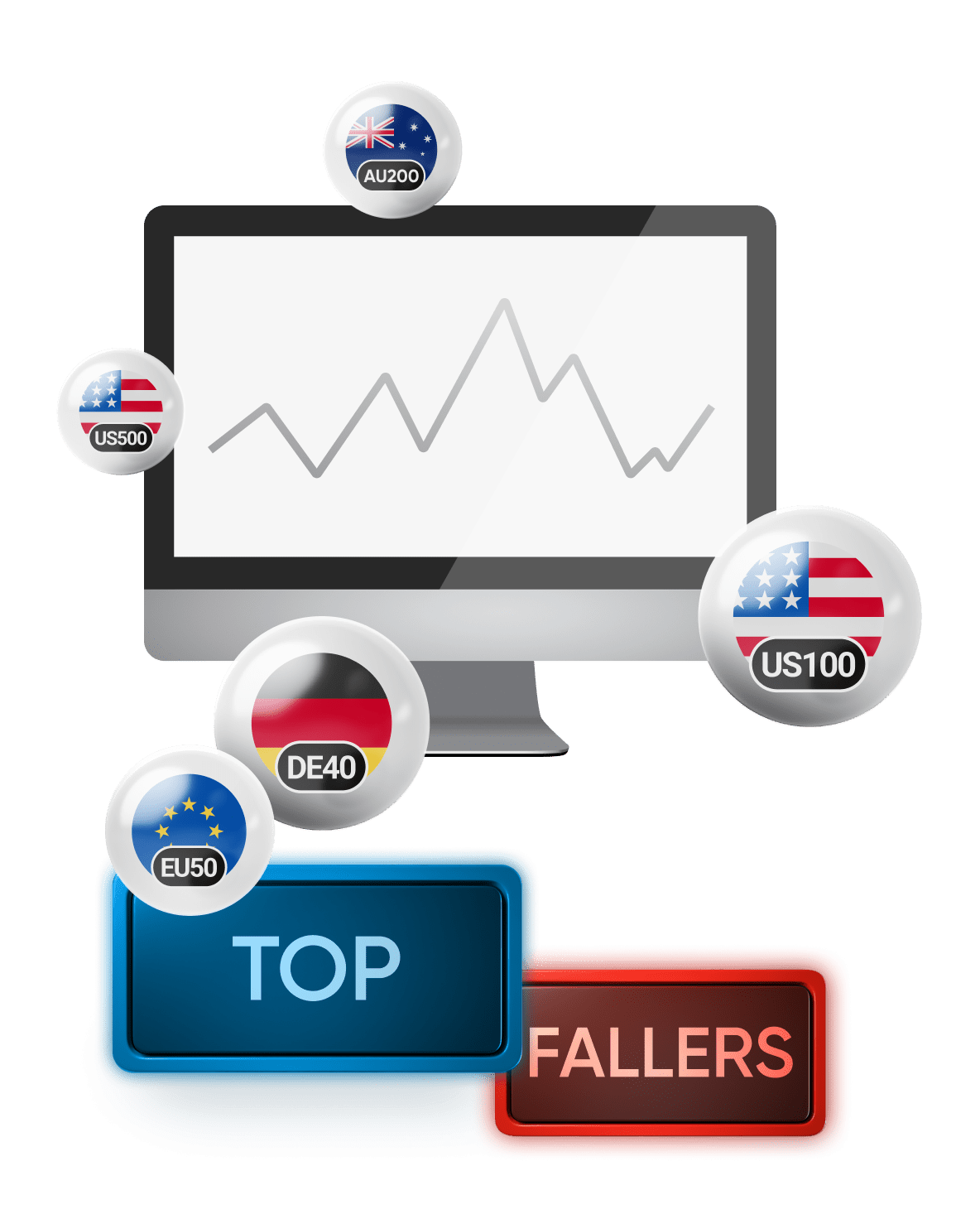Want to know which index markets have fallen the most today? Find out here. You can trade a range of popular indices with us using CFDs or spread betting.

An index is made up of a selected group of stocks or other financial instruments that represent a particular segment of a market. The composition of an index is determined by the index provider and is based on specific criteria, which can include market capitalisation, industry, liquidity, and geographic location, among others.
Many indices are weighted by market capitalisation, meaning companies with higher market values have a larger influence on the index's performance. Some indices focus on specific sectors (like technology or healthcare) or industries, providing insight into their performance.
Indices can also represent national markets (like the Nikkei 225 for Japan), regional markets (like the Euro Stoxx 50 for the Eurozone), or even global markets.
While the majority of indices include stocks from publicly traded companies listed on stock exchanges, some indices track other things like the performance of government or corporate bonds. Indices can also include other types of assets, like commodities.
Trading on indices offers a mix of advantages and disadvantages, as with any financial market. Before trading, it’s important to understand the pros and cons involved.
Indices can offer diversification to your portfolio, since they represent a broad range of sectors and companies. This can reduce the risks associated with trading on individual stocks. However, that’s not to say that index trading doesn’t pose risks – an index’s price can still move quickly and in unexpected ways, leading to the risk of losing your capital.
If you choose to trade on the price of a single stock index rather than on the shares of individual companies, you can sidestep having to do deep research into the performance of multiple corporations. However, you’ll still need to keep up with market-moving news affecting the country or sector that your index tracks.
With Capital.com you can use contracts for difference, or CFDs, to take a position on an index – giving you access to leverage. This enables you to take a position greater than your initial deposit, or margin – which can lead to large, fast gains and losses. You should be comfortable with how these complex products work before trading indices.
Before you can trade on any market, let alone indices, you’ll need to be prepared to stay informed about global economic indicators, political events, and other factors that can influence index movements. You should consider whether your schedule allows room for investing the necessary time and effort.
You’ll also need to learn about, and be comfortable with, the risks involved with trading indices. Trading on indices, especially with leveraged products like CFDs, involves significant risk, as leverage can lead to large, fast losses and gains.
It can also be helpful to practise trading with a risk-free demo account before trading indices with your own money. Many trading providers offer demo accounts that allow you to practise trading with virtual money, helping you understand the market dynamics without financial risk.
You’ll also want to ensure that your broker is regulated by a reputable authority, and offers the indices, other markets and trading products that you're interested in.